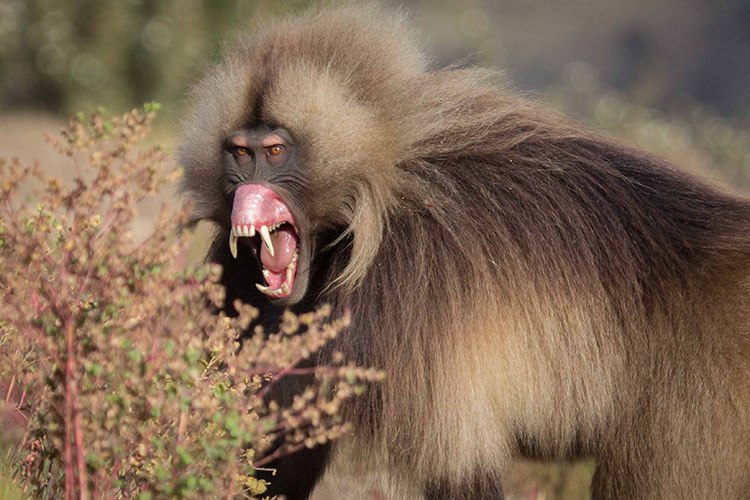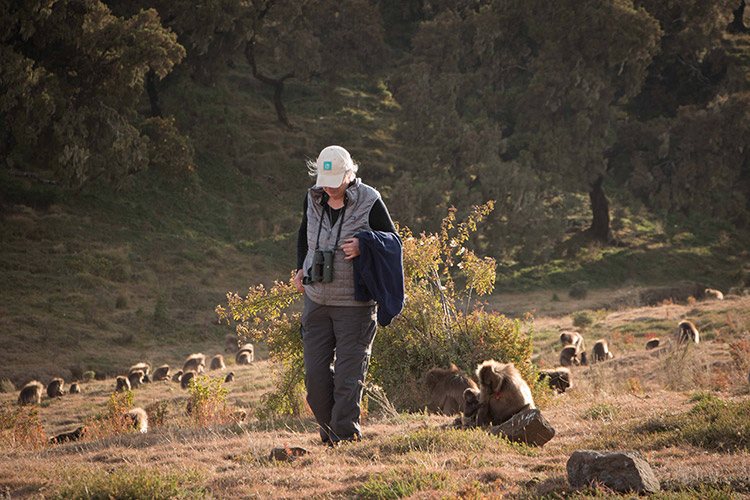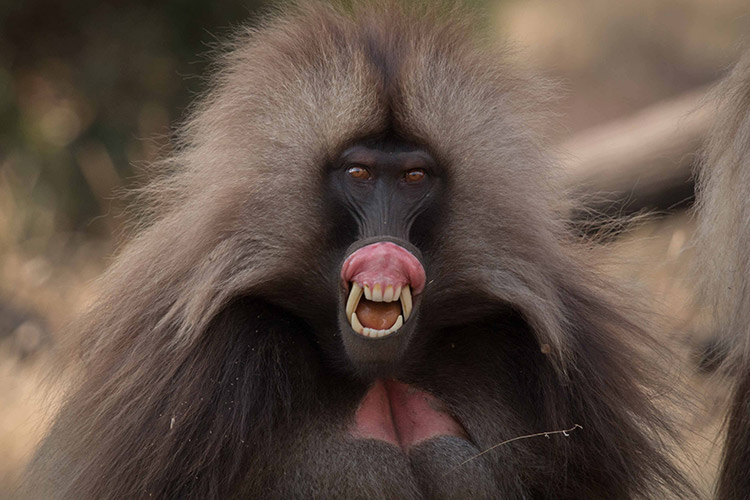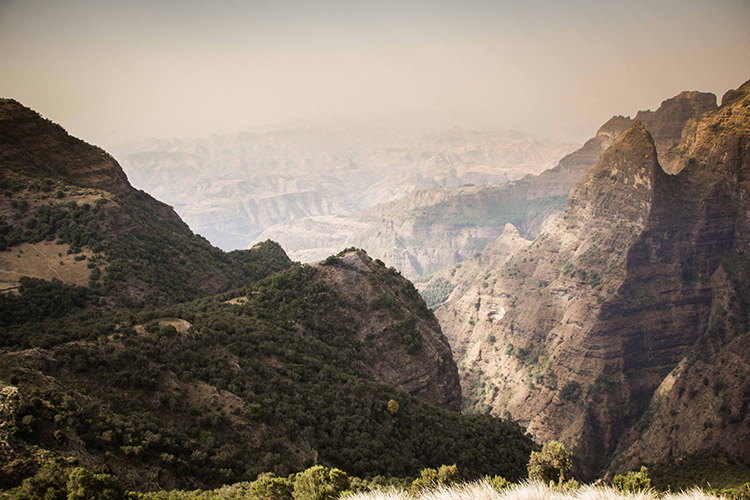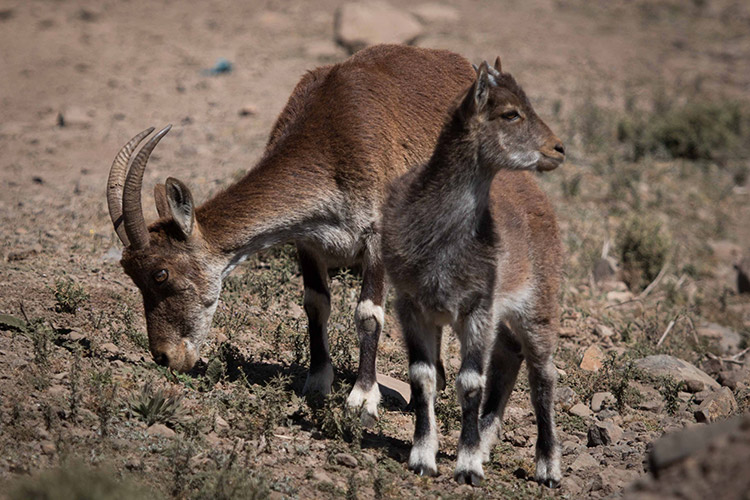Field Journal: Ethiopia Wildlife Tour 2016, Simien Mountains
Posted by Marco Tonoli
in Africa and Expeditions
Ethiopia. I am a firm believer that there is no other travel destination in the world that offers the immense amount of historic, cultural and natural diversity that one can experience in Ethiopia. When the story of a country starts “3.8 million Years Ago”, and one continuously hears the phrases like “The rarest in the world” or, “The last place in the world to see”, as well as having a history shrouded in mystery, you know it is a story worth listening to. It is the Roof of Africa, dissected by the Great Rift Valley and part of one of the world’s greatest migratory flyways. It is home to remarkable endemism, including the world’s rarest canid as well as rarest caprid. It is said to be the final resting place of the Ark of the Covenant and can trace its royal bloodline to King Solomon. This is Ethiopia.
After a brief stay in Addis Ababa, and passing through Bahir Dar, the access point to Lake Tana and the Blue Nile, our wildlife tour into the Ethiopian highlands began with what I can undoubtedly say has been my greatest primate experience to date. After checking into our lodge, we were soon out looking for the bizarre and wonderful Bleeding Heart Monkey … the Gelada. It wasn’t 5 minutes and we had our first view of what we thought was a small band. We were very wrong. Gelada social structure is remarkably complex. It functions on a tier type system. The lowest tier and most likely group one can encounter will have a single adult male and a few females and their offspring. This is called a One Male Unit (OMU), and can typically number around 12 individuals. Not all males though have this privilege, and these individuals join together in a bachelor like group, aptly called an All-Male Unit (AMU). It is quiet typical though for many one male units as well as all male units to gather together when good grazing is available, as well as to keep more eyes alert for dangers, and this we call a band of Gelada. This is a sight to see, and can be more than 300 Gelada all moving together, but still, this was not what we had found. On rare occasions, Gelada bands that share adjacent territories come into contact with each other to take advantage of grazing, and this is the famed Gelada herds. Before we knew it, gelada were appearing over every knoll and rocky out cropping, and we soon found ourselves right in the middle of one of these great herds, with no less than 1,000 Gelada in every direction. This joining of bands makes for inconceivable interactions, with dominant males continuously fending off intruding males, and all male units lined up on the rocks looking for the next victim to harass. While typical behavior is a humorous shuffle-gait of their rear ends as they pluck away at grass and roots, this was now replaced by raised eyebrows, lip-flipping to expose impressive canines and aggressive chases accompanied with screeches of male on male fights. The most remarkable part is that it is done without even looking twice at the humans scattered throughout the herd. They will sit no more than a few feet from your side grazing peacefully at one moment, then seconds later you will have a full blown battle happen between two males a few feet behind your back. It is a frenzy of activity and is without question a truly exceptional and up close experience with an extraordinary primate.
The Simien Mountain National Park lies in a high altitude region in northern Ethiopia, an area formed by both the presence of a huge mantle plume beneath the earth’s crust continuously pushing the land upwards and at roughly 30 million years ago an extensive basaltic outflow that covered a region up to 3 000m deep over an area twice the size of Texas. It is riddled with canyons, escarpment edges, peaks and plateaus, and what has emerged is immense biological diversity through the variety of altitudinal habitats. It was through this national park that we would explore with the hopes of finding the rarest goat on earth, a creature known to exist on extreme precipices along the escarpment edges … The Walia Ibex. Enroute to Chenkk Field Camp, we were amazed at the abundance of birdlife existing in the Afro Alpine Moorlands, and before we knew it we had already sighted Wattled Ibis, Thick-billed Raven, Spot-breasted Lapwing, Black-headed Siskin and White-collared Pigeon, five of Ethiopia’s endemic birds. In addition to these unique species, the highlands are inundated with rodents, and in turn attract a plethora of raptors. We sat watching Augur Buzzard scour the land, Peregrine Falcon swoop down on flocks of White-collared Pigeon and Tawny Eagle patiently perched and searching for prey. Continuing our search for the highly endangered Walia Ibex, we soon arrived at Chenek Camp and our local guide received the news that a group had been seen on a nearby cliff face. The walk through the Simien mountains in itself is a truly memorable moment, a vast open plateau cut with dramatic crags, the higher regions dotted with the bizarrely wonderful Giant Lobelia and below forests of Hagenia and Juniper in a landscape so vast that one can get lost in the view alone. After some minutes trekking to the escarpment edge, we sighted our first Ibex, resting in the shadows on a dangerously steep rock face. Training our binoculars, and scanning the surrounding area, we soon realized that we had discovered a large group of twelve individuals, both male and female, and one impressive ram with a rack of horns that would earn him the right to dominate during breeding season. The rarest goat on earth, happily resting in plain view. An impressive start to our Ethiopia wildlife expedition.
Learn more about future Apex Expeditions’ tours to Ethiopia led by naturalist, Marco Tonoli, at Ethiopia Wildlife Expedition.

